Keep the Itch Gremlins Off My Royal Coat
How to Keep Fleas off Your Great Dane
To keep fleas off me, my humans need to team up medical treatments with some natural tricks. My vet can prescribe oral medications or topical stuff that works – trust me, I’ve tried everything! My humans can also use natural helpers like neem or rosemary, which smell way better than those chemical sprays.
The real secret is keeping our house super clean. My humans should vacuum regularly (I love barking at the vacuum monster) and wash my bedding every week. I know it’s a lot of work, but clean bedding means fewer fleas trying to set up camp on my giant body.
Grooming is pretty awesome because my humans can spot fleas early, before they invite all their friends over for a flea party on my fur. Plus, who doesn’t love a good brushing session? My humans can also boost my diet to help my body fight off these tiny invaders naturally.
There are tons more my humans can do to keep me comfortable and healthy. Being a Great Dane means I’m a pretty big target for fleas, but with the right plan, we can keep those pesky little bugs away from my beautiful coat!
Effective Medical Treatments for Flea Control
Woof! How to Keep Those Pesky Fleas Off Me
Hey there, fellow dog lovers! It’s me, your friendly neighborhood Great Dane, and I need to talk to you about something that’s been bugging me – literally! Fleas are the worst, and trust me, when you’re as big as I am, that’s a lot of real estate for those tiny jumpers to explore.
My humans and I’ve learned about some pretty awesome medical treatments that work. There are two main types that keep me happy and itch-free.
First up are oral medications – basically fancy pills that I get to take (and sometimes they even taste like bacon, which is a win-win!). These little miracle workers get into my bloodstream and kick those fleas right out of my system. It’s like having a bouncer in my body that says “Nope, not today, fleas!”
First, there’s the magic of oral meds—bacon-flavored pills that kick fleas to the curb like a bouncer!
The best part? They work super fast, so I don’t have to suffer long.
Then there are topical treatments, which my humans put right on my skin. Think of it like invisible armor that creates a force field against fleas. They can’t get through, and if they try, they’re in for a nasty surprise!
These work well too, and I barely notice when my humans apply them.
The most important thing? My humans always check with our vet first. Every Great Dane is different – some of us are couch potatoes (guilty!), while others love rolling around outside all day. Our doctor helps figure out what works best for my specific lifestyle and health. Flea prevention is crucial for the health and comfort of Great Danes, so it’s something we take seriously!
The key is staying consistent with whatever treatment we choose. Trust me, a flea-free life is a happy life, and when you’re my size, comfort is everything!
Natural and Safe Prevention Methods
My humans have discovered some pretty pawsome natural tricks that work! They use herbs like neem and rosemary, which smell way better than those harsh sprays. Trust me, when you’re as close to the ground as I am, you notice these things! The fleas absolutely hate these smells, but I think they’re not too bad.
My favorite part is when my humans make this special spray with lavender and peppermint oils mixed with carrier oil. It smells like a fancy spa day! They spray it on my coat, and I feel like the most pampered pooch in the neighborhood. Plus, those tiny troublemakers stay far away from my magnificent fur.
The best part of our flea-fighting routine is brushing time. My humans brush my coat every day, which feels absolutely amazing when you’re my size. All that brushing helps spread the good-smelling oils around while getting rid of any uninvited guests and their eggs. It’s like getting a massage while staying flea-free!
These natural methods keep me comfortable and my humans happy. No harsh chemicals means no weird smells or worrying about what’s going on my skin. It’s a win-win for this gentle giant! Additionally, my humans ensure that I feel secure and relaxed during our grooming sessions, which is beneficial for my anxiety management.
Environmental Control and Home Maintenance
Woof! So my humans learned how to keep those pesky fleas off my magnificent coat using natural stuff, but that’s not the end of the story.
Woof! My humans found natural ways to keep those pesky fleas off my majestic coat, but the battle doesn’t stop there!
Oh no! Those sneaky little jumpers like to hide all over MY house and yard. Can you believe it? The nerve!
My humans have gotten pretty smart about making our whole place a no-flea zone. Here’s what they do to keep my kingdom flea-free:
– Making our yard flea-proof**: They get out that loud, scary lawn mower** every week to keep the grass short. I supervise from a safe distance, of course.
They also pick up all the sticks and leaves where fleas love to throw their little flea parties. Rude guests, if you ask me!
– Indoor cleaning like crazy people: My humans vacuum EVERYWHERE – the carpets, the couch where I definitely don’t sleep (wink wink), and all my favorite napping spots.
Then they take that vacuum bag outside faster than I chase squirrels. Smart move, humans!
– Washing my royal bedding****: Every single week, my humans wash my beds and blankets in super hot water.
It’s like a flea jacuzzi of doom! Any eggs or baby fleas hiding in my cozy spots get washed right down the drain where they belong. Regular cleaning helps maintain a healthy environment for my multiple Great Danes.
Between you and me, having a flea-free palace makes this Great Dane very happy!
Grooming Practices for Early Detection
Woof! Let me tell you about something super important – grooming time! I know, I know, some of you might be thinking, “Ugh, bath time again?” But trust me, it’s pretty awesome for keeping those pesky fleas away from my magnificent coat.
My humans use these cool tools called slicker brushes and flea combs on me. The slicker brush feels like getting a nice massage, and the flea comb is like having a tiny detective search through my fur for any unwanted visitors. It’s kind of fun watching my humans get all focused, like they’re on a secret mission!
Now here’s the thing about baths – my humans give me one every 4 to 6 weeks. At first, I was like, “Why are you making me wet?!” But now I’ve figured out that regular baths keep my skin feeling great and make it harder for fleas to set up camp on me. Plus, proper grooming tools help remove loose hair, distribute natural oils, reduce shedding, and enhance my comfort.
Plus, I get extra attention and treats afterward, so it’s not that bad.
The best part about grooming time is that my humans check me all over for weird bumps or scratchy spots. They’re like my personal bodyguards, making sure everything looks good.
And between you and me, all that petting and checking feels pretty nice. Who doesn’t love being the center of attention for a while?
Lifestyle Changes to Minimize Flea Exposure
How I Keep Those Pesky Fleas Away – A Great Dane’s Guide
Listen up, fellow four-legged friends! As a Great Dane who’s dealt with my fair share of unwanted tiny passengers, I’ve learned some tricks to keep those annoying fleas from making me their personal hotel.
- Eating right makes me strong: When my humans feed me good, healthy food, my body becomes like a fortress that fleas don’t want to mess with. It’s like having superpowers, but tastier! Plus, my diet includes pumpkin’s health benefits, which help keep my immune system strong.
- Staying away from flea neighborhoods: I’ve figured out that tall grass and woody areas are basically flea apartment complexes. Sure, they look fun to explore, but I’d rather avoid becoming a flea taxi service.
- My humans are cleaning ninjas: The vacuum cleaner might be loud and scary, but it’s my secret weapon! When my humans run that noisy monster over the carpets and wash my bedding, they’re basically evicting any flea babies before they can grow up to bother me.
Trust me, these simple changes have made my life so much more comfortable.
No more scratching like I’m trying to dig to China!
Final Thoughts
To wrap things up, keeping fleas off us Great Danes takes some work from our humans—kind of like when they try to keep weeds out of their flower beds. Just like they pull those pesky weeds before they spread everywhere, our humans need to give us flea treatments regularly, keep our house clean, and brush us often (which we secretly love, even though we pretend to be too cool for it). When our humans stick to this routine, they protect us from those annoying little jumpers and make our home way more comfortable. Trust me, when we’re flea-free, we Great Danes are much happier—and that means more tail wags and fewer midnight scratching sessions that wake everyone up!
References
- https://iheartdogs.com/flea-tick-prevention-for-great-danes-a-safe-effective-4-step-plan/
- http://www.greatdanerescue.com.au/Docs/flea_and_worming.pdf
- https://www.animalhospitalofspringfield.com/services/dogs/flea-and-tick-dogs
- https://www.chewy.com/f/giant-breeds-flea-tick-treatment_c381_f6v13793
- https://www.lovemargot.co/great-dane-blog?p=great-dane-has-fleas
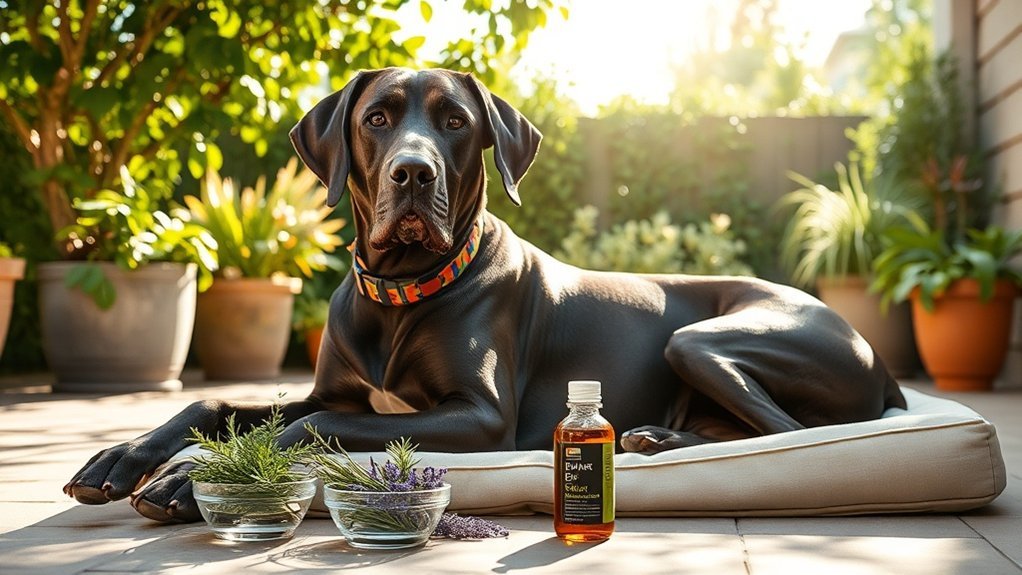
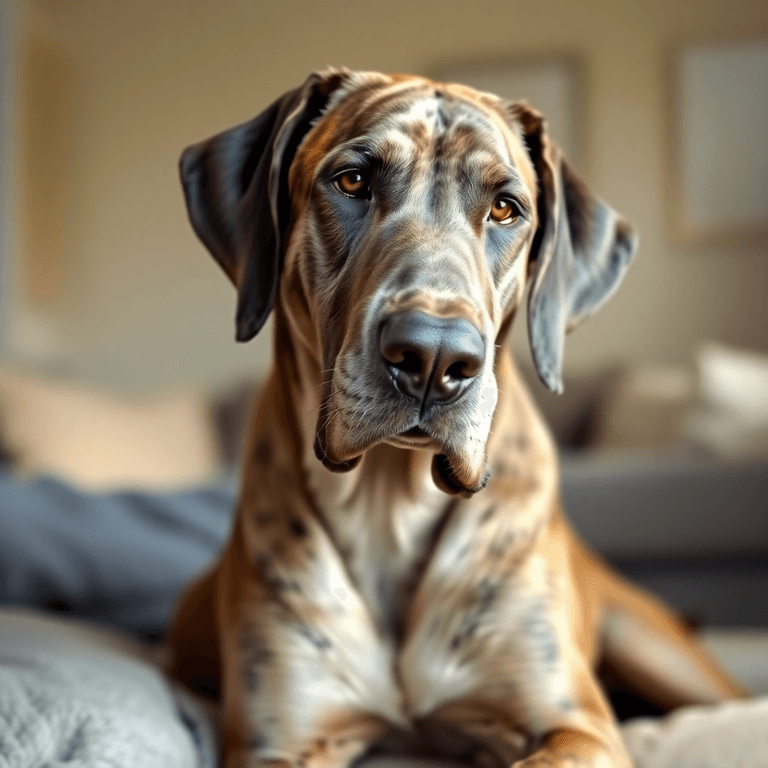
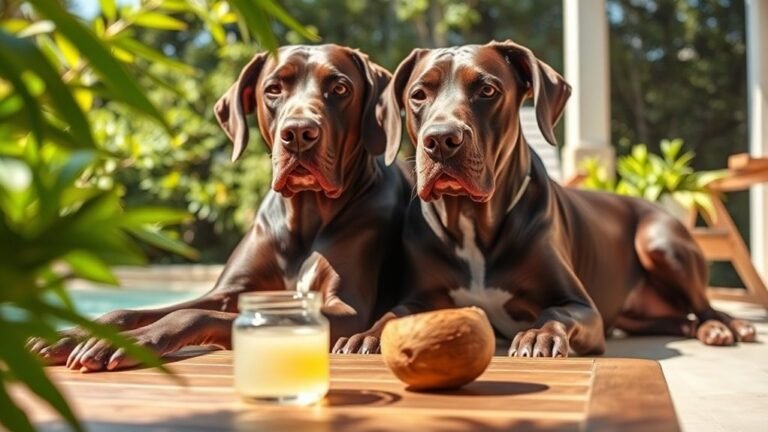
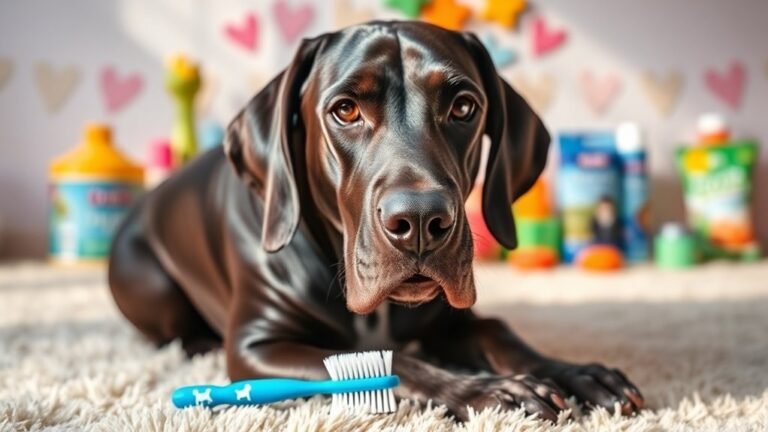
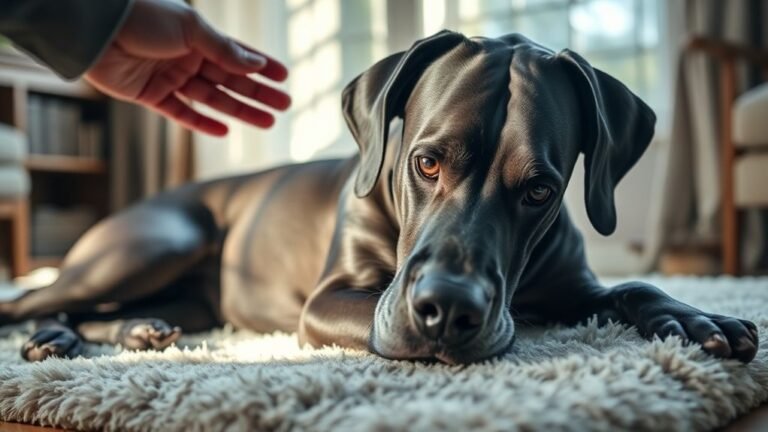

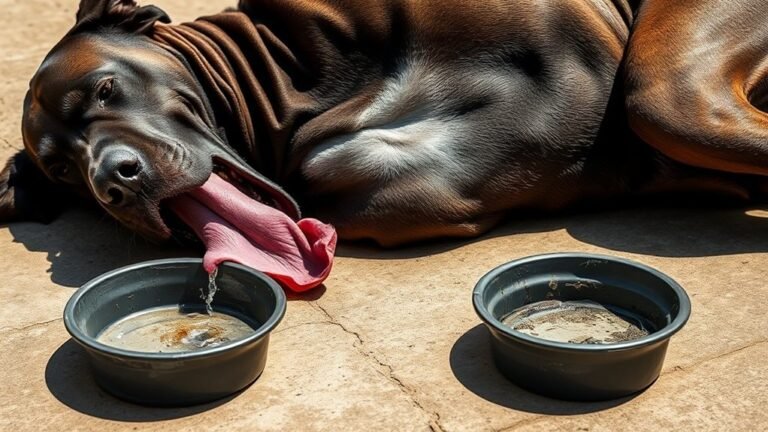
One Comment